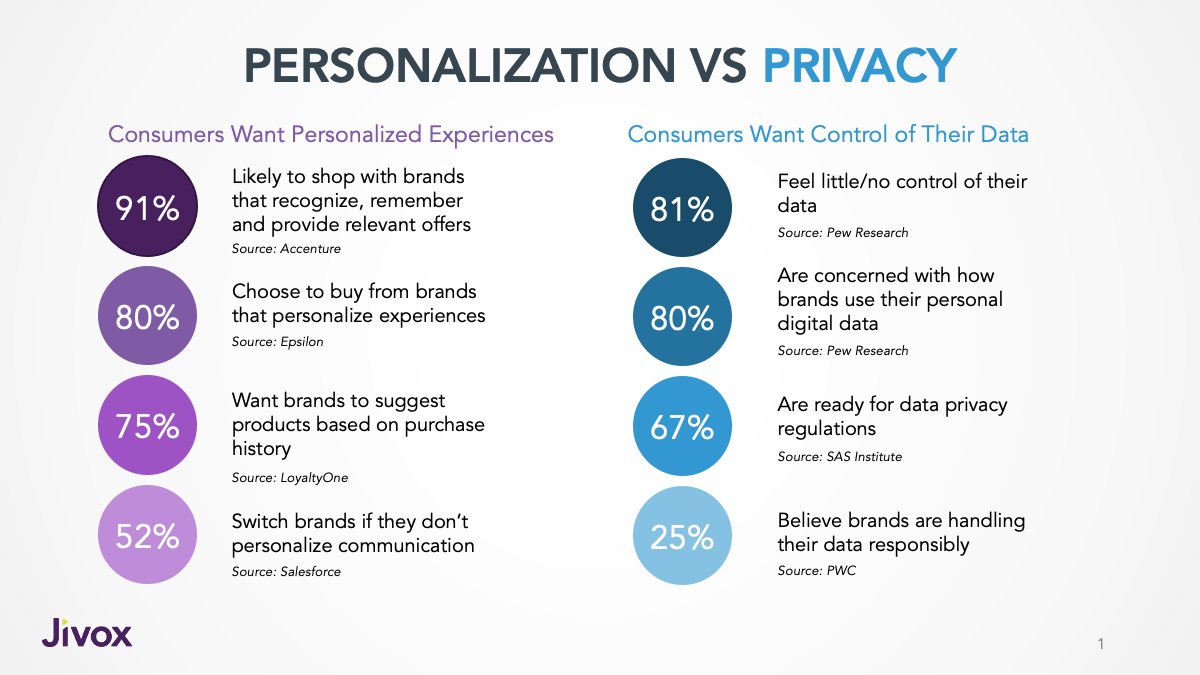Identity has become the topic of the day and a very polarizing conversation between Google and the rest of the advertising industry. Brands are having to sift through each Google blog post line by line on their plans for identity management and try to understand what Google’s planned changes mean for them. Depending on who you ask, it either means the end of 1:1 identity as we know it or perhaps the beginning of a new era and approach to identity.
Identity, it seems, is caught between consumers’ desires for more relevant, personalized experiences and their own push for privacy and protection of their data. Most if not all of the digital marketing industry relies on some mechanism to narrow down both the relevant audiences for their product and ensure they engage them with relevant content.
Sadly, since the beginning of the digital ad industry, and despite the importance of targeting and personalization, the technology for identifying users and their interests has relied heavily on the very low tech third-party browser cookie, which was never designed to help manage identity, and more recently, on device identifiers found on mobile devices.
These technologies are grossly inaccurate — for example, each one of your devices and, in fact, each browser you use identifies you as a different person. Furthermore, cookies expire and so any data pertaining to an individual also disappears along with them. At best, the industry relies on a system of rubber bands and scotch tape holding together something that is core to the entire industry.
So, no surprise here when the whole industry is up in arms over Google and Apple’s decision to join Mozilla, Microsoft and others and remove such a core piece of the technology with no promise of a replacement.
The industry is now figuring out how to respond with a variety of solutions. Some are viable while others are really not practical for marketers to use.
There are four types of modern identity solutions, and some use a combination of the following:
- Cohort-based solutions, such as Google’s FLoC. This is not really an identity solution, though Google touts it as one
- People-based or PII-based solutions, such as the TradeDesk sponsored Unified ID or Liveramp’s ATS
- First-party domain-based solutions, such as Jivox IQiD
- Probabilistic solutions, also known as fingerprinting
Google’s last announcement on FloCs left the industry somewhat puzzled as the company simply talked about FloCs and loosely referred to it as being a replacement for cookies. The problem? Google didn’t talk about what they would offer advertising applications requiring a 1:1 identity like re-targeting and personalization using a brand’s first-party data.
Yesterday morning, Google seemed to clarify quite emphatically that they DO NOT intend to provide a replacement for the 1:1 identity but will allow brands and other ad tech platforms to do so. In a bit of a sideswipe to people-based identity solutions like Unified ID and other email and PII-based ID systems like Liveramp ATS, Google stated that they did not believe such IDs would survive in the long run with increasing privacy concerns. Simply put, Google wants us all to believe that it is going to be illegal for brands and tech platforms to use data from a consumer who has consented to its use.
This is simply not true with the current privacy regulations like GDPR and CCPA. To be clear, these regulations don’t actually prevent brands and platforms from collecting emails and other personal identification from consumers, or disallow brands from using data attached to it, but simply require the consumer’s consent before doing so. Such regulation preventing brands from using consented data is not only unlikely but legally unenforceable as it is a contract between a consumer and a brand. Regulations preventing brands from using a consumer’s identity would result in virtually every app, website and service becoming unusable. Imagine: an Uber driver having to guess where you are because Uber is not allowed to use your identity or Instacart not being able to deliver because they are not allowed to know where you live. From a legal standpoint, a brand’s offering using the same identity for personalizing communications with a consumer should be legal and allowed with the consumer’s consent.
Most research shows that consumers agree. The sampling survey results below highlight that consumers not only want personalization but actually expect brands to be more intelligent in how they market to them. They also see themselves as unique individuals and not just part of a flock, no pun intended.
People-based IDs, while they are a strong and perhaps one of the most robust identity solutions likely emerging in the cookieless world ahead, currently and perhaps for some time will have challenges of scale and reach. Consortiums like Unified ID 2.0 are gaining significant momentum due to several trade organizations like the IAB, ANA, PRAM and several large brands — some of the largest advertisers like P&G, Unilever, GM, Ford and others getting behind the initiative and likely to gain widespread adoption amongst publishers as they are increasingly gating their content with registration requirements. With the significant growth in and investment by brands in direct-to-consumer sales from their websites and eCommerce capabilities on the rise, most brands likewise will have emails and likely user consent to use their data for marketing.
First-party domain based identity solutions like Jivox IQiD and the identity mechanism used by many other martech platforms like CDPs will be largely unaffected by this debate because they don’t rely on PII or third-party cookies or for that matter, FloCs or any such aggregation or approximation. Instead, they rely on consented data collected and used from within a brand’s domain as first-party–for example, as the brand’s CRM systems have traditionally operated and so provide a robust identity system not subject to the whims of Google or other browser makers. The same technology that is used by brand websites to identify returning logged in users which, of course, is not going away. Without this mechanism most websites and apps will no longer be able to function.
One important takeaway from Google’s blog post is the statement that they clearly support the first-party domain based solutions, stating quite clearly: “We will continue to support first-party relationships on our ad platforms for partners, in which they have direct connections with their own customers. And we’ll deepen our support for solutions that build on these direct relationships between consumers and the brands and publishers they engage with.”
Finally, probabilistic solutions that relied on browser fingerprinting have been on their way out. With Google, Firefox and Safari all actively disabling “browser signatures” that could be used to identify users without consent, fingerprinting is no longer a viable solution.
Google’s move away from 1:1 identity will likely lead to a big windfall for martech and adtech platforms that have robust identity technologies like the above for personalization and re-targeting. They will be the only route to precise personalized marketing and attribution. This may explain, to some extent, the recent significant increase in valuations of independent martech and adtech platforms as Google retreats much like Facebook into its own walled garden, leaving the open web wide open for other platforms to play freely without directly fighting Google’s adtech stack.
As a media platform though, Google will continue to gain power much like Facebook as it likely will continue to use its vast amounts of consumer data to optimize advertising on its owned media like search and Youtube– these also happen to be the most profitable parts of Google’s ad business. Could we see Google also retreat entirely from selling ad tech tools altogether, such as GCM, DV360, GCM Studio (for DCO), as they become less valuable to Google without identity? Quite possibly.

